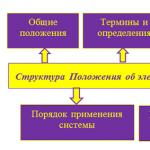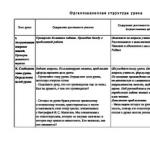Plan
Introduction
1. Extreme situation, its types and characteristics
2. A person in extreme situations, his reactions and behavior
2.1 Basic mental reactions of participants in extreme situations
2.2 Human behavior in emergency situations
2.3. Group behavior of people in extreme situations
2.4 Social forms of behavior in extreme situations
3. Methods for preventing unwanted reactions in extreme situations
conclusions
List of sources used
Introduction
Extreme situations and conditions that arise in people due to their impact, their behavior and their reactions have been studied by many researchers for many years. Tension states (states of tension) were studied by T.A. Nemchin, L.P. Grimak V.I. Lebedev. Emotional states that arise in extreme situations were studied by A.O. Prokhorov, A Kempinski, etc. Among mental phenomena, mental states have one of the main places. At the same time, despite intensive study of the problem of mental states, much remains unclear. According to T.A. Nemchina, “successful development of this problem is necessary because mental states significantly determine the nature of human activity.” In the Russian language dictionary, “extreme” (aya, oe) is defined as:
1. Reached the highest point, extreme, ultimate. For example, extreme temperature.
2. Beyond the ordinary, extraordinary (in complexity, difficulty, danger, etc.). For example, extreme conditions (from the French extreme).
Summarizing the above, we list the characteristics of the concept “extreme”: reaching the highest point, extreme, extreme, extreme, very great in strength. What situations should be considered extreme? There is no unity of views in the works devoted to this issue. In some cases, extreme situations are understood as circumstances that place demands on a person that go beyond the range of his capabilities determined by the evolutionary process. So, A.V. Korobkov, emphasizing that the criteria for the boundaries of the adaptive range are those characteristics of functions that were formed as a result of the evolutionary development of organs and systems possessing these functions, does not note the important and most often decisive role of the factor of the individual’s subjective reflection of the objective parameters of an extreme situation. An individual reflection of objective reality creates a subjective assessment of the situation and the degree of its danger. Ukrainian scientists M.I. Dyachenko, L.A. Kandybovich, V.A. Ponomarenko also point out the importance of subjective perception of an extreme (in their thesaurus complex) situation: “A tense situation is such a complication of activity conditions that has acquired special significance for the individual. In other words, complex objective conditions of activity become a tense situation when they are perceived, understood, assessed by people as difficult, dangerous, etc. Any situation presupposes the inclusion of a subject in it. This applies even more so to a tense situation that combines a certain content of objective activity with the needs, motives, goals, and relationships of a person. Consequently, a tense situation, like any situation, embodies the unity of the objective and the subjective. Objective – these are complicated conditions and the process of activity; subjective – state, attitudes, methods of action in dramatically changed circumstances. The general thing that characterizes tense situations is the emergence of a task that is quite difficult for the subject, a “difficult” mental state.” In the most general terms, an extreme situation is characterized as a situation of impossibility, i.e. as a situation in which a subject is faced with the impossibility of realizing the internal needs of his life (motives, aspirations, values, interests, etc.). Issues of human psychology in emergency situations must be considered in order to prepare the population, rescuers, and leaders for actions in extreme situations.
When considering issues of human behavior in emergency situations, much attention is paid to the psychology of fear. In everyday life, in extreme conditions, a person constantly has to overcome dangers that threaten his existence, which causes (generates) fear, i.e. a short-term or long-term emotional process generated by a real or imaginary danger. This work is dedicated to human behavior and reactions in extreme situations, in particular the socio-psychological behavior of a person in an extreme situation
1. Extreme situation, its types and characteristics
1.1 The concept of an extreme situation
Extreme situation (Latin extremum - extreme, limit; situatio - position) is a concept through which an integrative characteristic is given of a radically or suddenly changed situation, associated particularly unfavorable or threatening factors for human life, as well as high problems, tension and risk in implementation of appropriate activities in these conditions. The philosophical meaning of the concept of this concept is associated with a reflection of the extreme development of events and their knowledge in connection with the functional activity of the subject. The concept of an extreme situation reflects not just an emergency, but an exceptionally dangerous event or a set of dangerous events in relation to and only in connection with the activities of people, their existence.
Extreme situations (natural disasters, catastrophes, accidents, crises, conflicts), which are sometimes inevitable realities of people’s lives, including their professional activities, despite their diverse nature, have a number of common essential characteristics:
1) suddenness of the attack, requiring special preparedness for extremes;
2) a sharp departure from the norm of habitual actions and states; 3) the saturation of the developing situation with contradictions that require prompt resolution;
4) progressive changes in the state of the situation, conditions of activity, elements, connections and relationships of E.S., i.e. temporality of change;
5) increasing complexity of ongoing processes in connection with progressive changes and the novelty of situational contradictions and conditions;
6) relevance, transition of the situation into the phase of instability, reaching the limits, criticality;
7) the generation of dangers and threats by changes (disruption of activities, death, destruction of systems);
8) the saturation of the situation with the uncertainty of a number of changes due to their stochasticity, unforeseenness and novelty;
9) increasing tension for the subjects of an extreme situation (in terms of its comprehension, decision-making, response), etc.
An extreme situation is dangerous to life and health, and is unfavorable for the functioning of the human psyche.
Factors that generate mental tension can in some cases have a positive mobilizing effect on a person, and in others - a negative, disorganizing effect. We are interested in the resource state in extreme situations, so we will consider positive, mobilizing changes in the emotional, cognitive and behavioral sphere of the individual caused by the influence of such situations.
According to V.G. Androsyuk, such changes include:
- reduction of sensation thresholds, acceleration of sensory and motor reactions. A person shows the ability to more accurately assess stimuli, quickly responds to all changes in environmental conditions;
- decreased fatigue, disappearance or dulling of the feeling of fatigue. A person’s endurance and performance increase, and they show unpretentiousness in uncomfortable situational conditions;
- increasing readiness for decisive and bold actions. Strong-willed qualities are revealed, the decision-making stage is shortened, forecasting the development of the situation is optimally combined with healthy risk;
- activation of business motives, feelings of duty. A person becomes excited about business, the final and intermediate goals of activity are clearly and unambiguously determined;
- dominance of a positive emotional background. Solving a problem is accompanied by the emergence and maintenance of excitement, the experience of pleasure and joy with every successful action. There is a growing sense of social justice;
- activation of cognitive activity. A person exhibits acute perception and actively includes the reserves of operative and long-term memory. Creative abilities are updated, thinking is characterized by dynamism, flexibility, flexibility, active and successful search for non-standard solutions. Intuition is widely used.
- showing interest and enthusiasm.
In recent years, the concept of an extreme situation has acquired the status of one of the unified, generalizing categories in catastrophology, conflictology, security theory, management theories on management optimization, operational management, etc.
1.2 Classification of extreme situations
An emergency (extreme) situation (ES) is a situation in a certain territory that has arisen as a result of an accident, a dangerous natural phenomenon, a catastrophe, a natural or other disaster that may result in human casualties, damage to human health or the environment, significant material losses and disruption of people's living conditions. Each emergency has its own unique causes, characteristics and development patterns.
Emergency situations can be classified according to the following criteria:
By degree of surprise: sudden (unpredictable) and expected (predictable). It is easier to predict social, political, and economic situations; it is more difficult to predict natural disasters. Timely forecasting of emergencies and correct actions make it possible to avoid significant losses and, in some cases, prevent emergencies;
According to the speed of spread: an emergency can be explosive, rapid, rapidly spreading or moderate, smooth in nature. Rapid ones most often include most military conflicts, man-made accidents, and natural disasters. Environmental situations are developing relatively smoothly;
By scale of distribution: local, local, territorial, regional, federal, cross-border. Local, local and territorial include emergencies that do not extend beyond the boundaries of one functional unit, production, or locality. Regional, federal and transboundary emergencies cover entire regions, states or several states;
According to the duration of action: they can be short-term or have a protracted course. All emergencies that result in environmental pollution are protracted;
By nature: intentional (intentional) and unintentional (unintentional). The first include most national, social and military conflicts, terrorist attacks and others. Natural disasters, by the nature of their origin, are unintentional; this group also includes the majority of man-made accidents and catastrophes.
According to the source of origin, emergency (extreme) situations are divided into:
– emergencies of a man-made nature;
– emergencies of natural origin;
– Emergencies of a biological and social nature.
Types of man-made nature: transport accidents and catastrophes, fires and explosions, accidents with the release of hazardous chemical substances (HAS) and toxic substances (TS), accidents and disasters with the release of radioactive substances (RS) or highly toxic substances (STS), sudden collapse of structures, accidents on electrical and energy systems (EPS) or utility life support systems, accidents at industrial wastewater treatment plants, hydrodynamic accidents. any... . In order to prevention unwanted psycho-emotional reactions people panicking...
The work of a psychologist in the hearth extreme situations. Emergency psychological assistance
Coursework >> PsychologyTrauma can prevent many unwanted consequences and transition process... Not applicable in many extreme situations and ordinary methods psychological impact. ... population - in the form prevention: a) acute panic reactions; b) deferred, "...
Stress- methods prevention and overcoming
Abstract >> Pedagogy... reaction body, expressed in a state of tension. Stress occurs in a person under the influence extreme ... situations becomes reaction"escape from situations"...four main method prevention stress... Unwanted thoughts. Coping techniques unwanted ...
Psychology of human behavior in emergencies situations (2)
Abstract >> PsychologyEmergency situations. People's behavior in extreme situations shares... definitely. Methods prevention panicky reactions. 1. Foundation prevention any psychological... . In order to prevention unwanted psycho-emotional reactions people panicking...
The entire nature of the professional activities of police officers includes the constant negative impact of stress factors (irregular working hours, constant contact with offenders, the need for full dedication of mental and physical strength when performing official duties), which leads to a decrease in the effectiveness of the professional activities of police officers in everyday situations of professional activity.
Extreme situations are quite common. Thousands of people die in them, and even more suffer various injuries. They cause enormous material damage. Extreme situations arise in the life of almost every person. They are associated with experiences and tensions, and are fraught with serious consequences in life. They arise, as a rule, suddenly and develop rapidly in a dangerous direction for a person, often taking him by surprise against his will.
Extreme situations are those that confront a person with great objective and psychological difficulties, oblige him to exert his full strength and make the best use of his personal capabilities to achieve success and ensure safety.
Extreme situations associated with crimes and criminal activity are of particular importance for society. Several million crimes are committed in our country every year; of which tens of thousands of murders, intentional harm to the health of citizens and rapes, robberies and robberies, more than one million thefts, 200 thousand hooliganism and fraud, etc. New types of crimes such as corruption, contract killings, kidnapping for ransom and the revival of the medieval slave trade in some regions, terrorism, counterfeiting, hostage-taking, attacks on protected objects in order to seize weapons and valuables.
It should be noted that the operational and official activities of police officers in extreme conditions are characterized by increased moral, psychological and physical stress. In most cases, such activity occurs under high psychological stress. Service tasks are performed by personnel continuously, under any conditions. At night, the operational situation causes a number of additional difficulties in the activities of police officers, negatively affecting their psyche.
Operational and service tasks are often carried out in isolation from places of permanent deployment. Police officers often find themselves in conditions of limited mobility, monotony and monotony of impressions from the surrounding area and protected objects. The lack of sensations and perceptions has a depressing effect on them, as a result of which performance decreases, memory and attention deteriorate, and psychological readiness for activity in extreme conditions decreases.
The rhythms of life during this period are disrupted; they are determined not by natural needs, but by the needs of the service. Sanitary and hygienic conditions, organization of life and food also differ significantly from the usual.
A number of habitual ways of satisfying the needs of leisure and communication are changing among police officers, and the possibilities of psychological compensation for negative operating conditions are limited.
The most important factors influencing the activities of police officers when performing combat service tasks in areas of emergency, in armed conflicts, are the presence of contacts with offenders, the contradictory attitude of the local population towards employees, and the need to act against a hostile part of the citizens of their own state. All this causes a natural internal psychological contradiction, a moral conflict with one’s own beliefs. This process is usually accompanied by negative emotional experiences.
Department of Internal Affairs officers have to participate in such actions as conducting “cleansing operations” to identify armed militants in populated areas and outside them, checking passport regimes and confiscating weapons from the population, releasing military and police detachments surrounded by armed bandits, serving at checkpoints , participation in reconnaissance and search activities in populated areas, on the ground, etc.
In such conditions, police officers are required to be able to detect and record traces of crimes committed by bandits, and maintain the ability to respond to the possibility of bandits’ actions using underground communications, sniper nests, etc.
Official work in such conditions requires police officers to ensure utmost composure, mobilization, vigilance, active thought, confidence in success, and a state of emotional balance. The weaker the professional training, the greater the impact of stress factors on people, the more attention should be paid to the psychological readiness of police officers for operational work in extreme situations. It is necessary to overcome both underestimation and overestimation of the forces and capabilities of the opposing side, therefore it is unacceptable to relax until there is complete confidence in security. What is needed is reasonable caution, diligence, the ability to unravel the enemy’s actions, the ability to surpass him in solving professional problems, which is what police officers must constantly teach.
Studying the activities of police departments in a difficult, life-threatening environment allows us to conclude that an employee feels confident if a possible situation is familiar to him from previous experience or training, if he has sufficiently complete information about what is happening, where his combat troops are located comrades and what neighboring units are doing. The psychological significance of such awareness is enormous, especially when operating at night, in populated areas, or in mountainous conditions. Lack of information and inadequate perception of it lead to a misunderstanding of the situation, and this is an additional source of gross errors in the activities of commanders and their subordinates (shooting at friendly forces, causing panic).
To summarize, we can cite the main psychological factors that influence the activities of police officers when performing service and combat missions in extreme conditions.
1. Danger factor. Danger should be understood as a perceived threat to life, health or well-being. In addition, a feeling of danger can arise not only in relation to one’s own life, but also in relation to subordinates or interacting people. An employee may be in danger of the reality of losing weapons or military equipment, without which it is impossible to perform a military mission. The danger factor is the main (or primary) one that determines the psychological specifics of a service-combat situation.
When performing service and combat missions danger is perceived as an objectively existing combination of circumstances or objects that threaten life and health. Moreover, it can be real or imaginary.
The perception of danger depends on the individual psychological characteristics of employees: some tend to exaggerate the degree of danger, others tend to underestimate. Both are equally unacceptable when performing service and combat missions, since in extreme conditions the danger is almost always real.
Its immediate perception must be adequate. To do this, danger should not surprise you or cause a feeling of fear. Accordingly, during psychological training it is necessary to develop in employees the ability to realistically assess danger.
Inadequate perception of danger leads to professional errors, increased psychological tension, panic and, ultimately, disruption of activities.
2. Factor of surprise. Suddenness is an unexpected change in the situation for an employee during the performance of a service-combat mission.
Let us consider the psychological mechanism of the influence of this factor. Before doing anything to achieve a goal, a person imagines the sequence of his actions, actions, the dynamics of external conditions, and creates a certain program of personal behavior. In this case, automated actions are excluded. After all, a person perceives external conditions from the point of view of the possibility of achieving the desired goal, and makes his own adjustments. However, in the process of professional activity, conditions can change so dramatically that it will be necessary to set a different goal and, accordingly, a different program of behavior. The employee must anticipate changes in the situation and must be prepared for the need to change the program of his activities.
It is a completely different matter if the employee did not even foresee the possibility of the emergence of conditions leading to the need to change the purpose of the action. It is this situation that is perceived as sudden.
Employees react differently to a sudden change in the conditions for carrying out service and combat missions. Conditionally we can distinguish three types of behavior when exposed to this factor:
A. The employee quickly switches, defines a goal and implements a new program (positive type).
B. The employee, despite external changes in the situation, stubbornly continues to carry out the old program. As a rule, in this case the activity ends in failure.
C. The employee stops the old program, but does not define a new goal and a new program. He is practically inactive, falling into a state similar to a psychological stupor. The duration of this condition may vary. Taking into account that the situation in extreme conditions of activity changes very quickly, in this case, service-combat activities, as a rule, end in failure.
3. Uncertainty Factor. By uncertainty we mean
absence, insufficiency or inconsistency of information about the content or
conditions for performing service and combat missions, about the enemy (criminal, organized criminal group) and the nature of his actions.
They say there is nothing worse than waiting and catching up. And in the first (situation
expectations) and in the second (“chase” situation) cases there is a significant element of uncertainty.
The intensity of the impact of the uncertainty factor varies and depends on many conditions. The situations in which it arises are also varied.
In a service-combat situation, this factor is always present.
The negative impact of uncertainty can be reduced if employees have psychological techniques for controlling emotional tension.
4. The factor of novelty of means and methods of implementing activities in extreme conditions. Novelty is determined by the employee’s experience and knowledge.
The negative impact of the factor of novelty in service and combat conditions can be partially reduced if, in the process of psychological training, employees study the real experience of others in similar situations. Such classes should not be “constructed” in the abstract, but take the form of a detailed analysis and psychological analysis of the service-combat situation, mistakes made by one or another specialist, possible options for the development of the situation and the necessary actions of employees. Such events are especially important for managers at all levels.
5.Momentum factor. It should be understood as the employee’s ability to complete the assigned (or emerging) task using previously developed skills and abilities. This factor is realized if the time required to complete the actions necessary to achieve the goal is sharply reduced. Such situations arise very often in a service-combat situation. And then success in this case will be determined by the psychological readiness, speed and coherence of actions of both the individual employee and the department as a whole.
6.Time shortage factor. This factor arises in conditions under which the successful fulfillment of service and combat missions is impossible with an increase in the tempo of actions, and a rapid change in the very psychological structure of the activity is necessary. In this case, we are talking not just about increasing the pace of the actions performed, but, first of all, about changing their sequence.
The influence of unfavorable factors, with the complete or partial inability of employees to deal with them, contributes to the emergence of neurotic disorders, psychosomatic diseases, professional deformation and ultimately prevents the effective implementation of assigned tasks.
Forming psychological stability among police officers is a complex socio-psychological process. The psychological stability (stress resistance) of a police officer depends on his natural inclinations, his social environment, as well as his professional training and experience. Will a police officer be able to act at the right time instantly, actively, correctly and effectively? In practice, in the event of sudden aggressive actions on the part of offenders, police officers are psychologically unprepared to counteract: they are late, show confusion, sluggishness, and make unforgivable and seemingly inexplicable mistakes.
1.2.3 Characteristics of an extreme situation
Before turning to the discussion of the definition of extreme situations, we will describe the general characteristics of an extreme situation. To illustrate the approaches common in the literature, we present only one of the most detailed classifications (Marishuk V.L., Evdokimov V.P., 2001).
The following conditions are considered as factors determining extremeness:
1) Various emotional influences due to the danger, difficulty, novelty, responsibility of the work performed, limited by the limit (especially the shortage) of required information.
2) The threat of mass destruction from natural disasters. 3) Actions at night, with sensory deprivation, as well as with a clear excess of conflicting information.
4) Development of a state of panic in war conditions.
5) Excessive mental stress in very responsible mental, psychomotor activity with significant loads on cognitive mental processes: attention, perception, memory, ideas, etc.
6) Excessive load on speech functions, especially in conditions of strong emotions.
7) High physical activity with excessive strain of strength, endurance, speed in static positions.
8) High physical and emotional stress when exposed to acceleration, vestibular stress, sudden changes in barometric pressure, breathing under excess pressure.
9) Conditions of prolonged hypokinesia (immobility, limitation of motor activity), physical inactivity (lack of natural application of force).
10) Exposure to unfavorable climatic, microclimatic living conditions: heat, cold, high humidity, oxygen deficiency, increased composition of carbon dioxide in the inhaled air.
11) Adverse effects of various radio frequencies, noise, vibration.
12) The presence of various harmful elements in the inhaled air and the environment (including in the hydrosphere).
13) Presence of hunger, thirst, etc.
M.Sh. Magomed-Eminov identifies the existentials of an extreme situation:
An extreme situation is a new, non-everyday, changed reality into which a person moves from the previous one (everyday life) and from which a person is directed to a further transition.
2. In this non-everyday reality, human existence occurs in the horizon of the existential dilemma of life-death, the retraction of being into non-existence; in THIS situation, the semantic structure of the personality has a bipolar character of the “D - L” semantic structure, transforming the semantic picture of the personality’s life world, the experience of fundamental invulnerability and symbolic immortality. In total, there are 14 existentials - signs of an extreme situation from the point of view of general psychological characteristics. Among them are also duality of possibilities, violation of the integrity of life experience, transformation of personality: fragmentation, duplication of a person’s self-identity, difficulty in understanding and interpreting what is happening by a person, limitation of the possibility of existence, self-realization, fulfillment of needs, choice of goals, action, control of the situation, actions, transformation of the semantic structure of the individual , the growth of the desire for the possibility of existence, the will to duration, etc.
Based on this, there are three approaches to defining an extreme situation:
1) “empirical-psychological” (or empirical) approach - it places emphasis on a discrete incident that occurred, examines the characteristics of the behavior and reaction of a biosocial individual;
2) a formal psychological (or psychological) approach, which emphasizes the functions, processes, states, properties, reactions that characterize the adaptive activity and mental activity of the subject;
3) the metapsychological (or ontological) approach places emphasis on the event of the individual’s existence in the life world within the framework of human psychology.
1.2.4 Work of an individual with extreme experience
An extreme situation is a situation in which the existence of a person in the life world is transformed. The everyday mode of being turns into a non-everyday mode of being - and a situation, or phenomenon, of transordinary existential transitivity (TET) is created, in which a person finds himself in the flow of existential transitions. The non-everyday mode of being is understood here as a way of being of a person in conditions of the invasion of non-existence into being, death into life. Extremeness, thus, is defined not as a special property, quality or intensity, but ontologically, as the invasion of non-existence into being and the direction of the individual’s existence to overcome (in transgressive work) non-existence. In an extreme situation, an extreme experience is formed. One of its main components is experience.
Thanks to the work of the individual, the concept of the work of experience is revealed. Experience, following Husserl, is interpreted as intentional mental activity aimed at an intentional object - objective meaning. Thus, in experience it is necessary to distinguish: the subject of experience, the activity of experience, the object of experience (i.e., what is experienced). In this sense, strictly speaking, all mental activity is intentional, that is, aimed at achieving a specific goal. Since we distinguish between activity, subject (personality) and the work of personality (self-identity), in which a variety of different activities are connected (activities are connected, and not synthesized or integrated) into the nodes of personality, then we transfer this distinction to the activity of experiencing, or experiencing .
But the work of the personality is broader than the work of experience, which, in essence, is the conscious work of the personality. The proposed interpretation is consonant with phenomenology and Vygotsky’s concept and differs from the understanding of experience as a special activity of coping with critical states (Vasilyuk F.E., 1984).
Not every experience is a coping activity; a person experiences not only suffering, but also joy, enlightenment, transgression, etc.
Coping or coping is interpreted as a form of personal work - instrumental work of the individual or work of mastering one’s own situation in the world and time.
Thus, experience as an objective mental activity includes perception, memory, feeling, expectation, imagination, fantasy, judgment, thinking and other mental activities or acts of activity aimed at the object - the experienced. Consequently, a person experiences not only suffering, but also positive experiences.
Protection, ensuring, with the help of self-government bodies and military commissariats, the receipt of social benefits established by law. Thus, specialized centers for the socio-psychological rehabilitation of combatants play an important role in resolving this problem. Conclusion The problem of socio-psychological rehabilitation and human adaptation to living conditions and...




...), which may arise subsequently. Participants must be informed where they can subsequently receive help. The purpose of debriefing is to reduce the severity of psychological consequences after experiencing stress and. prevent the development of post-traumatic stress disorder syndrome.. Debriefing tasks: · Responding to impressions, reactions, feelings. · Contributing...

Object and subject of the study The object of this study was post-traumatic stress disorder. The subject of the study is the peculiarities of the psychological consequences of traumatic stress in extroverted and introverted combatants. 2.1.3 Purpose, objectives and hypotheses of the study The purpose of the study is to identify the characteristics of the psychological consequences...
Differences in age, education, and the nature of combat experience. Symptoms of PTSD in groups of adapted and maladapted combatants. The results of clinical diagnosis of PTSD are presented in Table. 2. In the “adapted” group, 91.9% of veterans never had post-traumatic symptoms. Partial current PTSD was identified in two people (5.4%), complete past PTSD - ...
Topic 4.
General characteristics of extreme factors. Extreme factors of operational activities.
Study questions:
Question 2. Characteristics of negative mental states that arise during the service of police officers.
Question 3. Psychological foundations of personal safety of citizens and law enforcement officers.
Question 1. General characteristics of extreme situations.
An extreme situation (from the Latin extremus - extreme) is a set of conditions and circumstances that go beyond the usual, which make it difficult or impossible for individuals or social groups to live. This concept is usually used as a synonym for emergency. An extreme situation is experienced by an individual in different ways. On the one hand, it can have a destructive effect, increasing anxiety and depression, feelings of helplessness and hopelessness, which can lead to a life crisis. And on the other hand, to give meaning to life, to make it more complete and meaningful. In any case, a collision with a critical situation is painfully experienced by a person and changes his attitude towards life, death, himself and values, which forms various life strategies, certain personal characteristics that help a person get out of a critical situation.
The set of factors influencing the psychophysical state of a person and his behavior in extreme conditions is called in the literature stressors, or stress factors - i.e. These are factors that cause stress reactions and illnesses in humans, and under certain conditions they are cause-and-effect.
These are the stressors:
1) everyday intense professional activity,
related to the characteristics of various areas of activity of the Ministry of Internal Affairs,
regulated by orders, regulatory documents of the Ministry of Internal Affairs, etc.
(irregular working hours, “strengthening”, etc.);
2) activities in extreme conditions (emergency
circumstances of a socio-political nature, emergency
natural and man-made situations and emergencies
incidents of a criminal nature);
3) family life (love, divorce, marriage, birth of a child,
death or illness of loved ones, etc.);
4) moral character (remorse,
responsibility for the lives and health of both innocent people and
criminals, the need to use weapons and other means
lesions);
5) mixed origin (need to resign and
adapt to different living conditions, sexual disharmony,
illness, the need for surgery,
unmet material needs, etc.).
The above stressors may differ in the duration of action and the nature of the impact on the human body.
The preparedness of any state in the world for natural and man-made emergencies is largely based not only on the preparation of relevant services and structures, but also on the general readiness of the population. The basis of such preparedness is widespread informing the population about emergency situations and teaching them first aid skills and the psychological foundations of survival. Statistics show that a person who has even the most minimal knowledge of first aid, in a critical situation, spends less time assessing what is happening, is less likely to panic and is able to more objectively assess emanating threats. An important fact is that such a person interacts much more effectively with government agencies involved in eliminating the consequences of an emergency situation. Even one trained person out of dozens of employees of one office or enterprise can significantly reduce the number of casualties and deaths by competently organizing evacuation, promptly calling emergency services and providing them with the most complete information about what is happening.
A situation in which there is a direct threat to human life and health is called dangerous. Danger - the ability to cause any harm, misfortune; the possibility of something dangerous, some kind of misfortune, harm *2. In nature or the technosphere, a situation in which phenomena and processes may arise that can affect people, have a destructive effect on flora and fauna, and cause material damage. In public life there are also dangers of a social nature (primarily manifestations of crime) that arise due to the fault of people.
*2: (Dictionary of modern Russian literary language / USSR Academy of Sciences. M, 1959. T. 8. P. 882.)
Extreme situation(from Latin extremus - extreme) - a set of conditions and circumstances that go beyond the usual, which make it difficult or impossible for individuals or social groups to live. This concept is usually used as a synonym for emergency. Extreme situations are the most complex dangerous situations when several unfavorable conditions and risk factors for humans coincide. Extreme situations usually require the exertion of all his physical and spiritual forces to protect the life and health of a person.
The concept of “extreme situation” is often used in the literature, which reflects the impact on a person of dangerous and harmful factors that led to an accident or excessive negative emotional and psychological impact. Extreme situations (ES) include work-related injuries, fires, explosions, road traffic accidents, as well as circumstances that can lead to injuries of varying severity.
The population must be prepared to act in extreme situations that may happen to them in the course of their life, since some probability of an accident always exists. Therefore, it is necessary to provide measures to provide assistance to those in extreme situations in advance. In order to reduce the negative impact of unfavorable factors, maintain self-control, endurance, and the ability to self-help, it is necessary to carry out psychological, physical and other types of preparation for persons who may find themselves in extreme situations. Extreme situations usually involve a small number of people and are local in nature.
Emergency(Emergency) is a situation in a certain territory that has arisen as a result of an accident, a dangerous natural phenomenon, a catastrophe, a natural or other disaster that may result or has resulted in human casualties, damage to human health or the environment, significant material losses and disruption of living conditions people *3 . Emergency situations (ES) are large-scale dangerous and extreme situations involving a large number of people and threatening severe consequences.
*3: (Federal Law of December 21, 1994 No. 68-FZ “On the protection of the population and territories from natural and man-made emergencies.)
In the Dictionary of the Russian Language by S.I. Ozhegov, the word “extraordinary” is interpreted as “exceptional, very large, surpassing everything.” The phrase “emergency situation” defines dangerous events or phenomena that lead to a violation of life safety.
Emergency situations are circumstances arising as a result of natural disasters, accidents and disasters of man-made, environmental, military, social and political nature, causing a sharp deviation from the norm of human life, the economy, the social sphere or the natural environment.
Emergencies are events of large scale, covering a large area and threatening a large number of people. The division of dangerous situations into extreme and emergency is conditional; no distinctions are made by scale.
The concept of an emergency is based on the fact that its source is a dangerous incident, as a result of which damaging factors of direct or indirect impact on a person are created. Based on the nature of the source, a distinction is made between man-made, natural, biological-social (biosocial) and military emergencies.
The source of a man-made emergency is a dangerous man-made incident. Dangerous man-made incidents include emergency explosions in the industrial zone of the industrial-residential complex; accidents on engineering and transport communications; fires in the industrial zone of the industrial-residential complex; chemical accidents associated with the release of hazardous chemicals into the environment; radiation accidents, etc.
The source of a natural emergency is a dangerous natural phenomenon, as a result of which an emergency situation may arise in a certain territory or water area. A dangerous natural phenomenon is an event of natural origin or the result of natural processes, which, due to their intensity, scale of distribution and duration, can have a damaging effect on people, national economic facilities and the environment. Natural hazards include hazardous geological, hydrological and meteorological phenomena, as well as natural fires.
The source of a biosocial emergency can be a particularly dangerous or widespread infectious disease of humans, farm animals and plants.
The source of a military emergency is the use of modern weapons. Modern means of destruction include military weapons in service with troops, the use of which in military operations causes the death of people, animals and plants, destruction and damage to national economic facilities, and elements of the natural environment.
The number of emergencies in the world and in our country, according to statistics from the Russian Ministry of Emergency Situations, is increasing. In recent decades, humanity has been losing up to 5-10% of its total gross product every year from natural and man-made emergencies. In Russia, the growth of man-made emergencies is mainly due to the wear and tear of industrial equipment, which, according to experts, reaches up to 70% in some industries, as well as the human factor (operator errors, disruption of the technological process, fatigue, etc.).
A significant part of man-made emergencies are fires. 6-7 million fires are registered annually in the world. As a result of exposure to dangerous fire factors, 65-75 thousand people die, and over 6 million people receive burns and injuries. In our country, about 250 thousand fires occur annually, over 15 thousand people die in fire, and about the same number receive injuries and burns of varying severity.
An increase in the number of man-made emergencies is currently possible also from the actions of terrorists, due to the destruction of potentially dangerous objects during international conflicts and local wars.
Thus, the average annual increase in socio-political and economic losses from natural and man-made emergencies is 43% in terms of the number of deaths, 9% in terms of the number of victims and over 10% in material damage.
This number could have been lower if the entire population had been properly trained to deal with various emergency situations. Understanding the importance of educating the population in this direction, the Government of the Russian Federation, by Decree No. 547 of September 4, 2003 “On training the population in the field of protection from natural and man-made emergencies,” determined that training the population of the Russian Federation should be carried out within the framework of the Unified Training System in the field civil defense and protection from emergencies of a natural and man-made nature at all enterprises, institutions and organizations, regardless of their organizational and legal form, as well as at the place of residence, and approved its procedure.
The Government of the Russian Federation, by its resolution, approved the Regulations on the classification of emergency situations of natural and man-made nature, according to which emergency situations are classified depending on the number of people affected; the number of people whose living conditions are impaired; the amount of material damage; the size of the distribution zones of damaging factors of the source of the emergency situation.
In accordance with this decree, emergency situations are divided into local, local, territorial, regional, federal and transboundary.
In general, emergency situations can be considered as a combination of emergency and extreme situations, which is called a dangerous situation. At the heart of extreme and emergency situations is a residual risk arising from the truth about the potential danger of any human activity. Often in the press, on radio and television, the same events are called differently - an accident or a disaster. At first glance it may seem that there are no differences between them, but it is enough to evaluate the losses and human casualties, and the differences in concepts appear.
An accident is damage to a machine, production line, power supply system, equipment, vehicle, building or structure. At industrial enterprises, accidents are usually accompanied by explosions, fires, collapses, releases or spills of highly toxic substances. These incidents are minor, with no significant loss of life.
A disaster is an event with tragic consequences, a major accident with loss of life. The WHO Committee on Contemporary Society believes that a disaster is an unforeseen and unexpected situation that the affected population is unable to cope with on its own. The following types of disasters are distinguished:
- environmental disaster - a natural disaster, a major industrial or transport accident (catastrophe), leading to extremely unfavorable changes in the habitat and, as a rule, massive damage to flora, fauna, soil, air and nature in general;
- industrial or transport disaster - a major accident resulting in human casualties and significant material damage;
- man-made disaster - a sudden, unforeseen release of mechanical, chemical, thermal, radiation and other energy.
Natural disasters are dangerous phenomena or processes of geophysical, geological, hydrological, atmospheric and other origins of such magnitude that catastrophic situations arise, characterized by a sudden disruption of human life, destruction and destruction of material assets.
Natural disasters, as a rule, lead to accidents and catastrophes in industry, transport, utilities and other spheres of human activity.


















